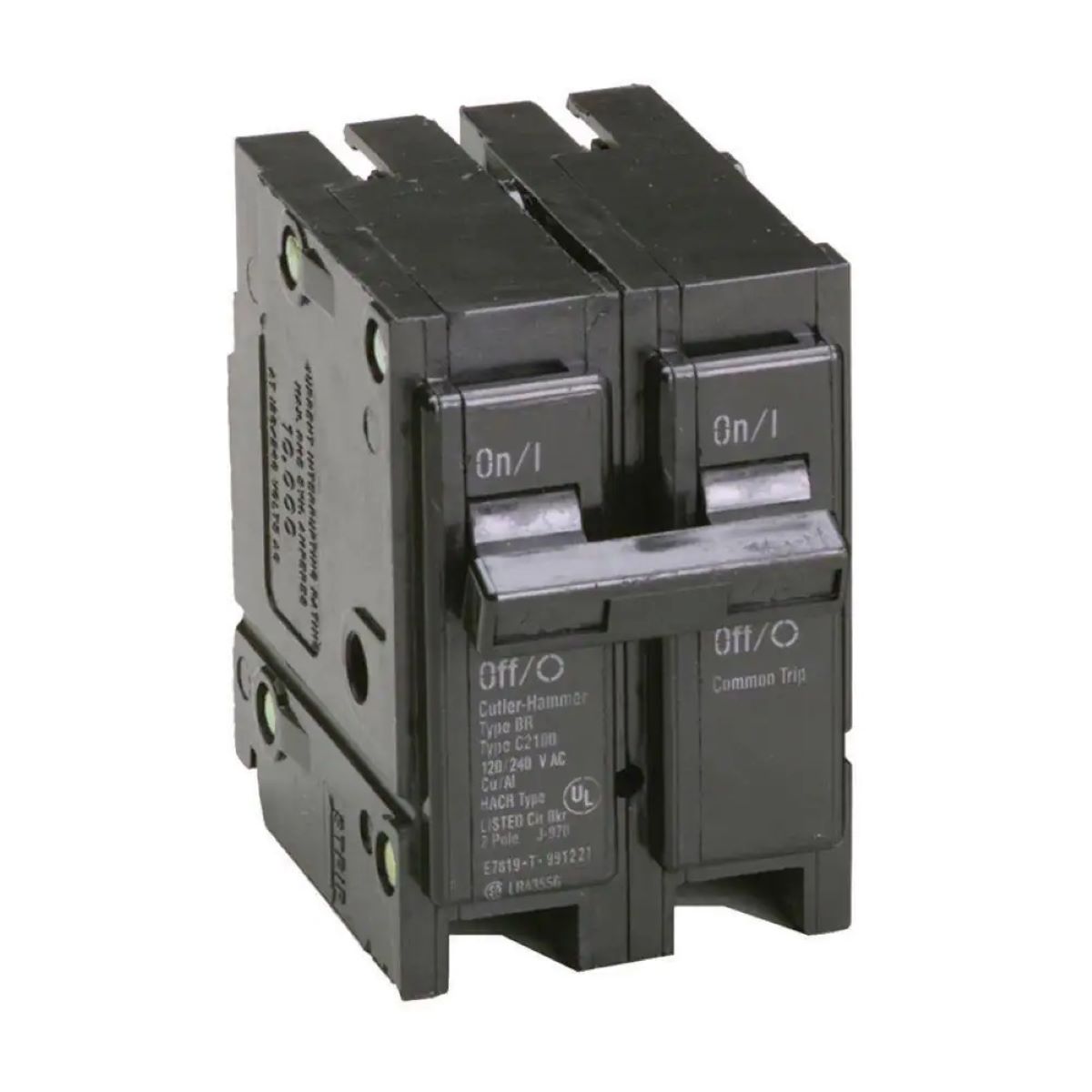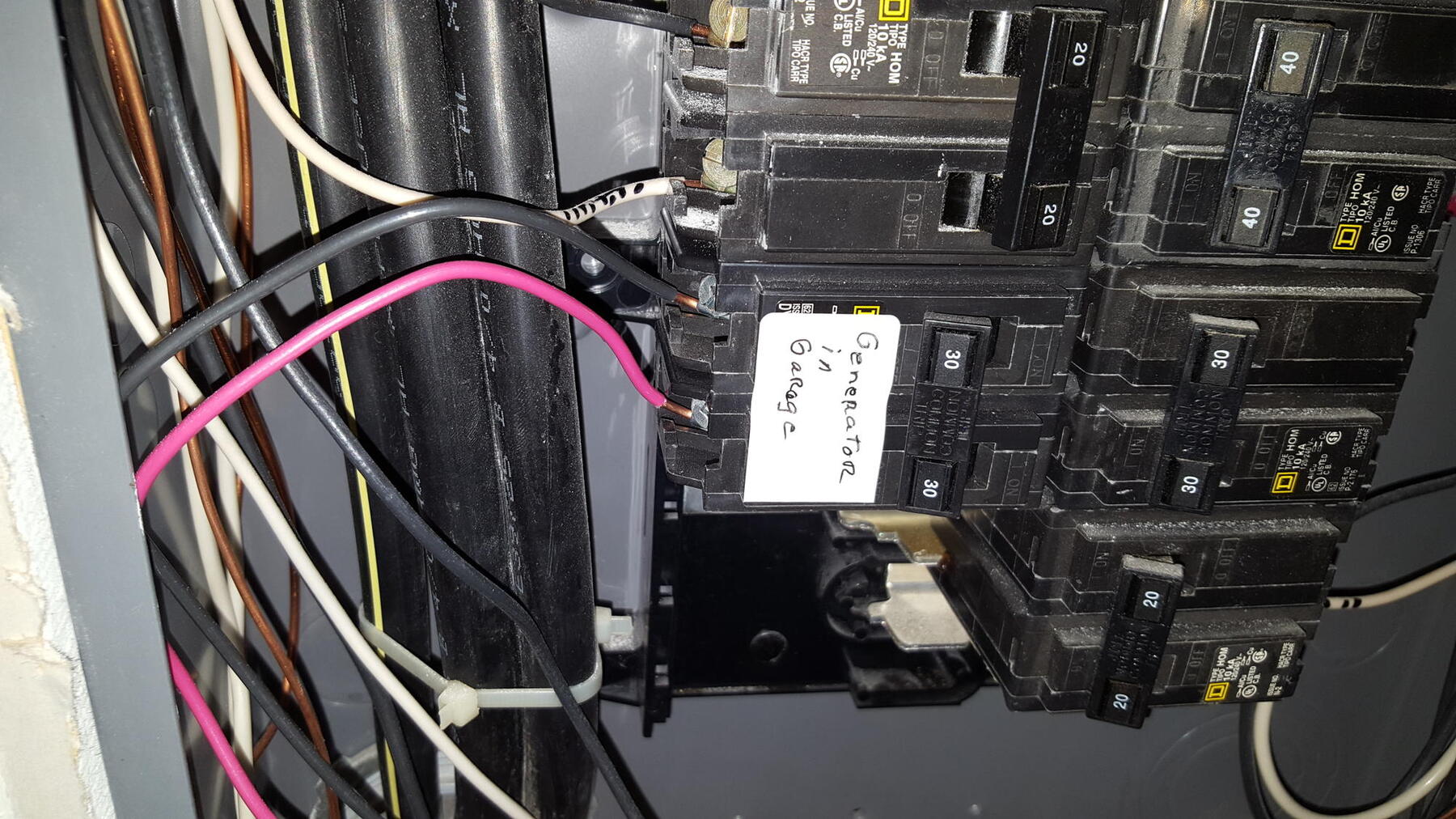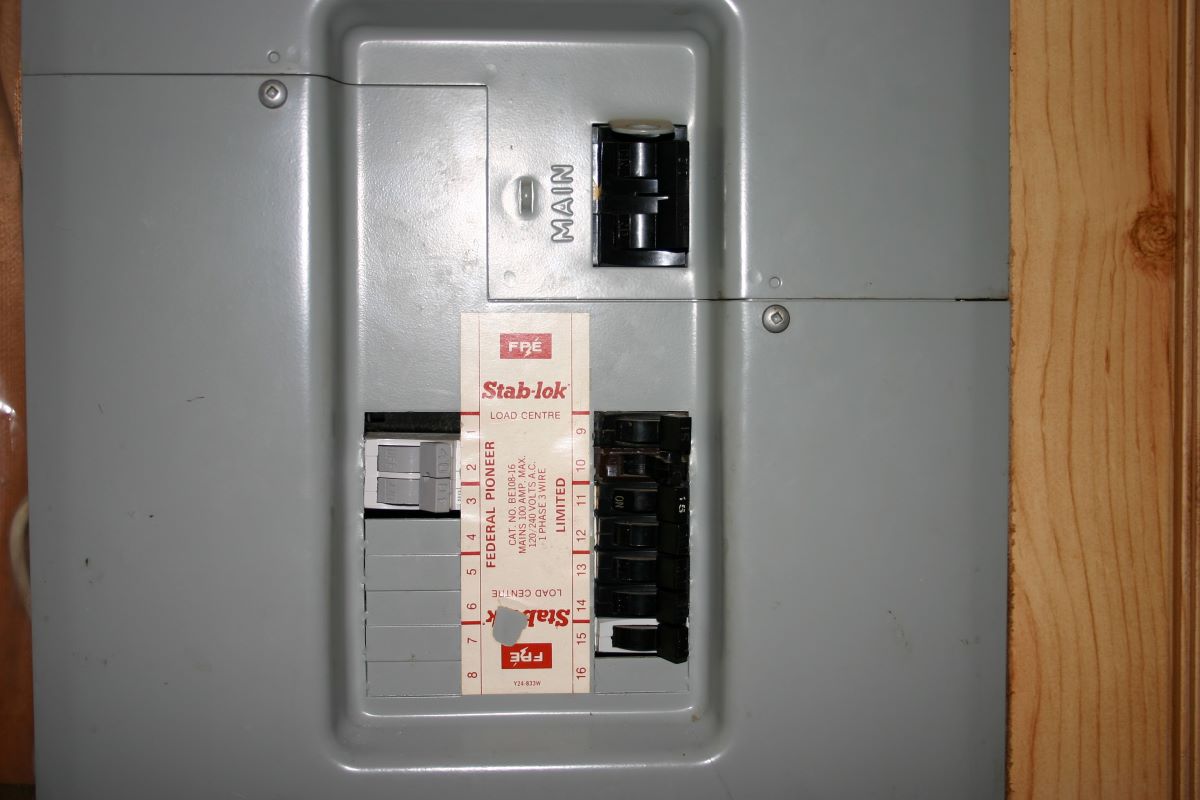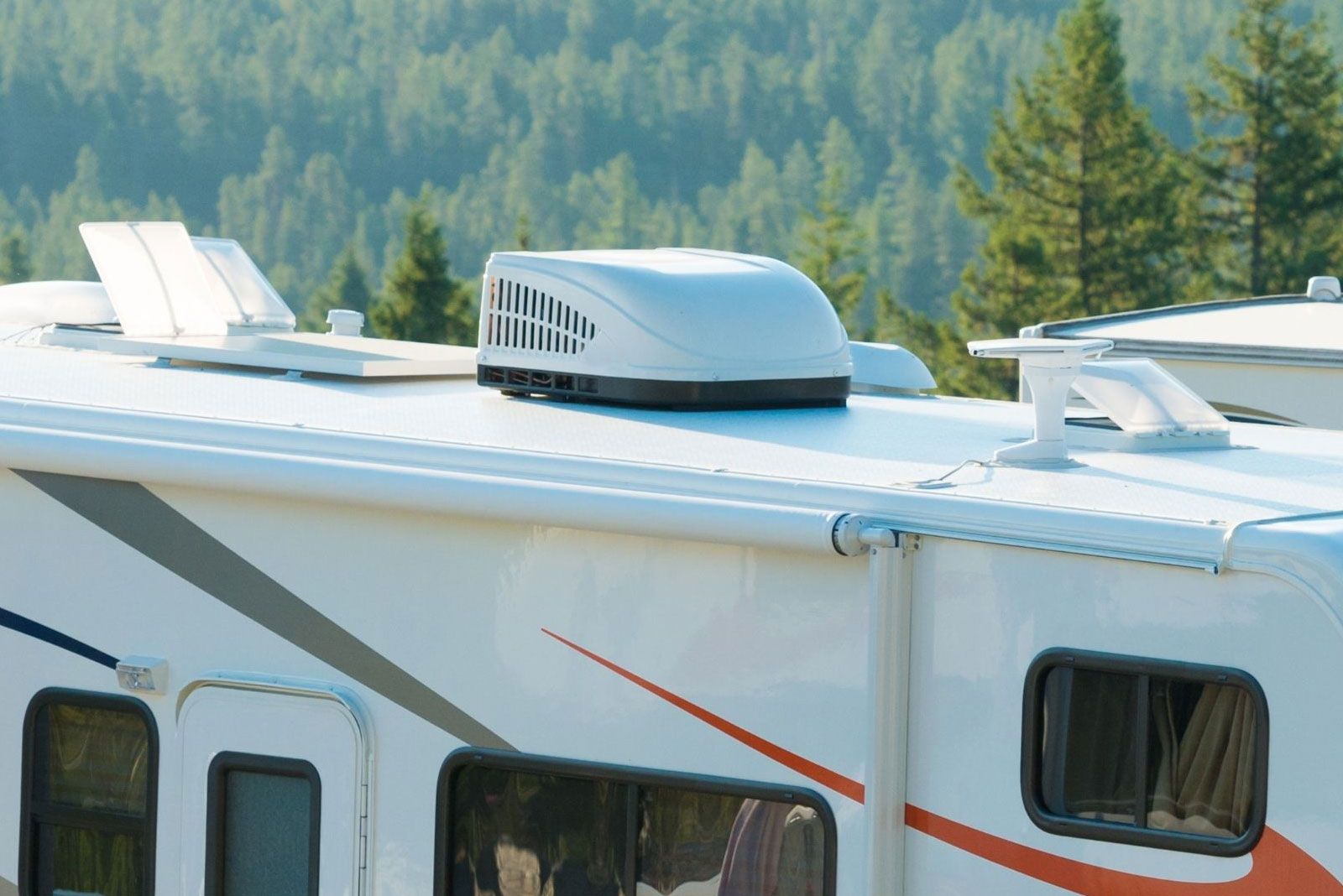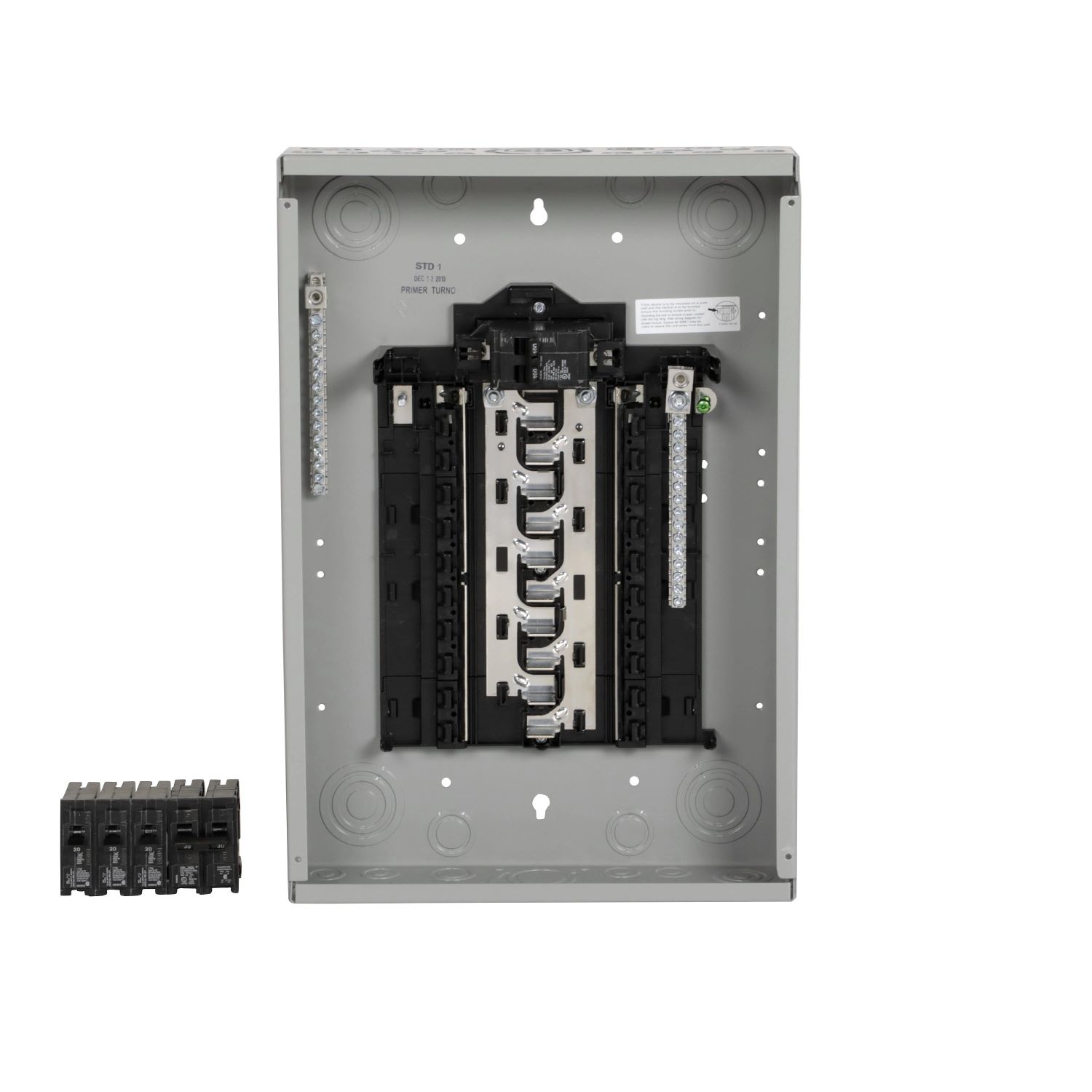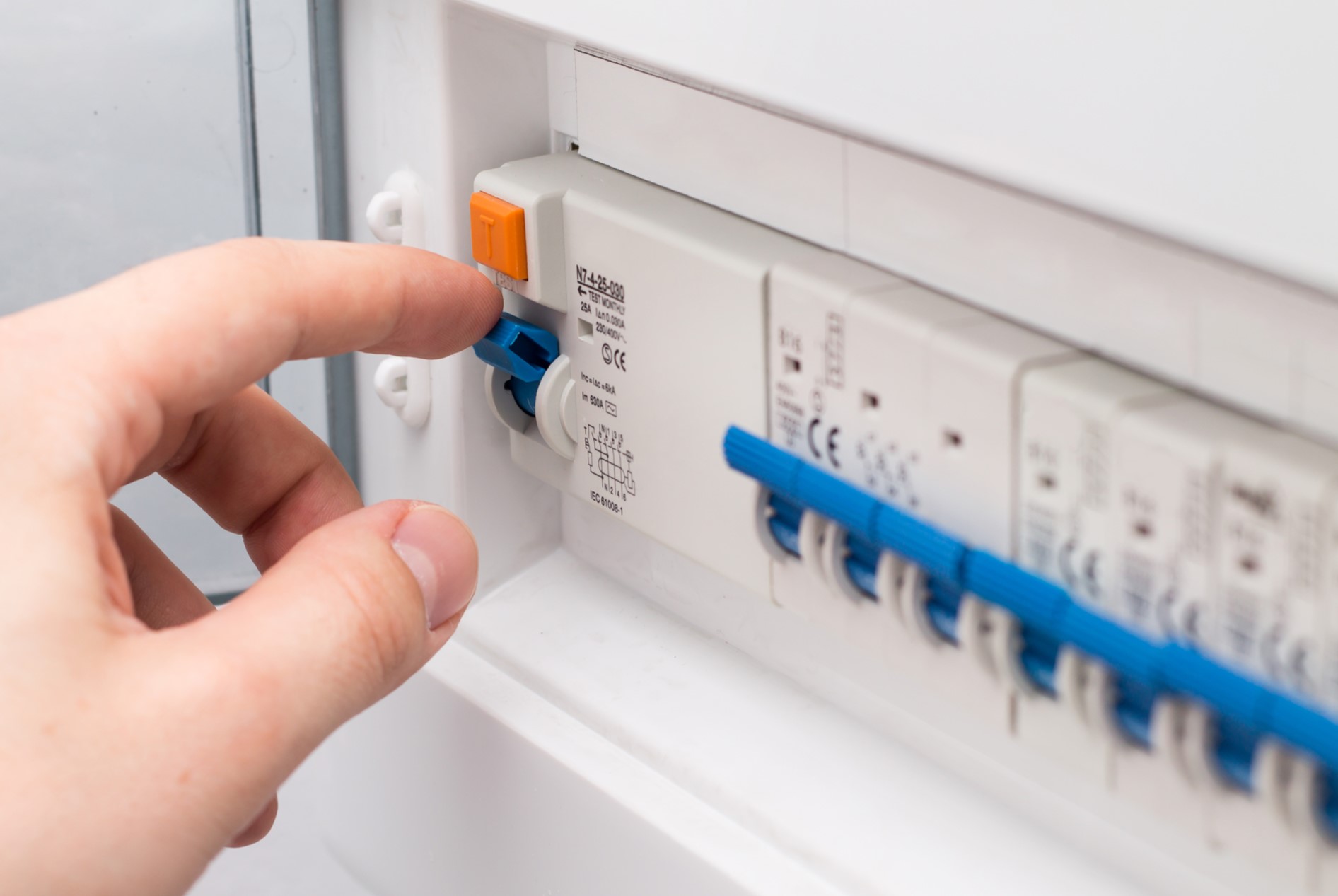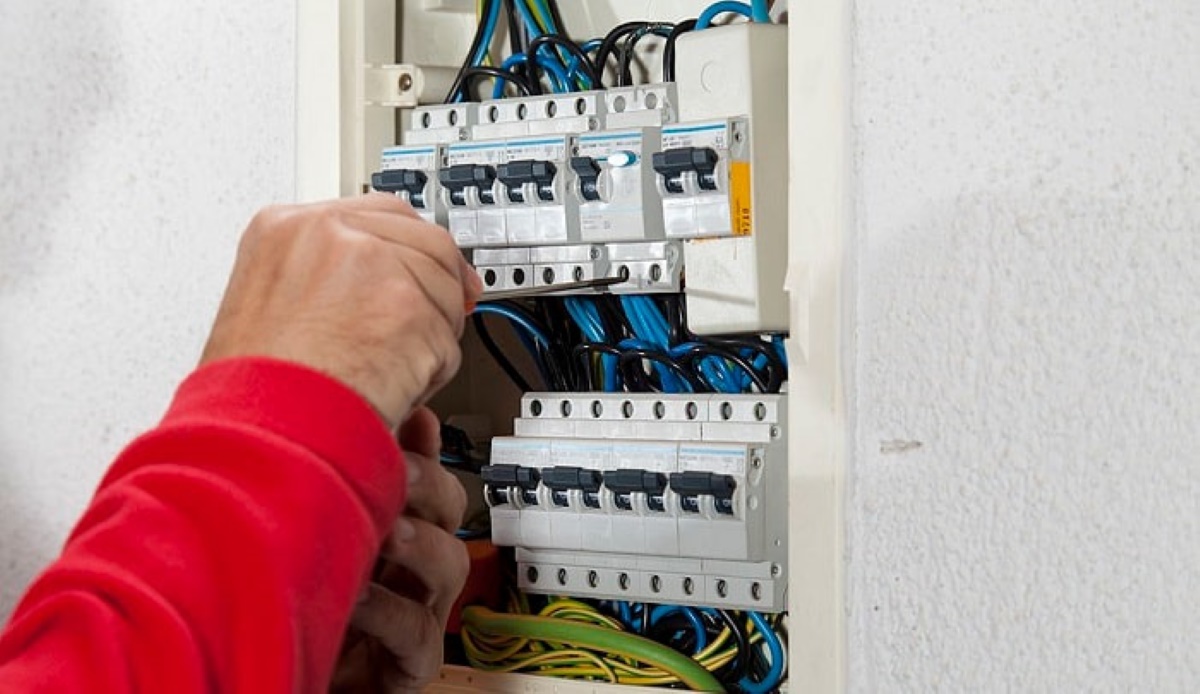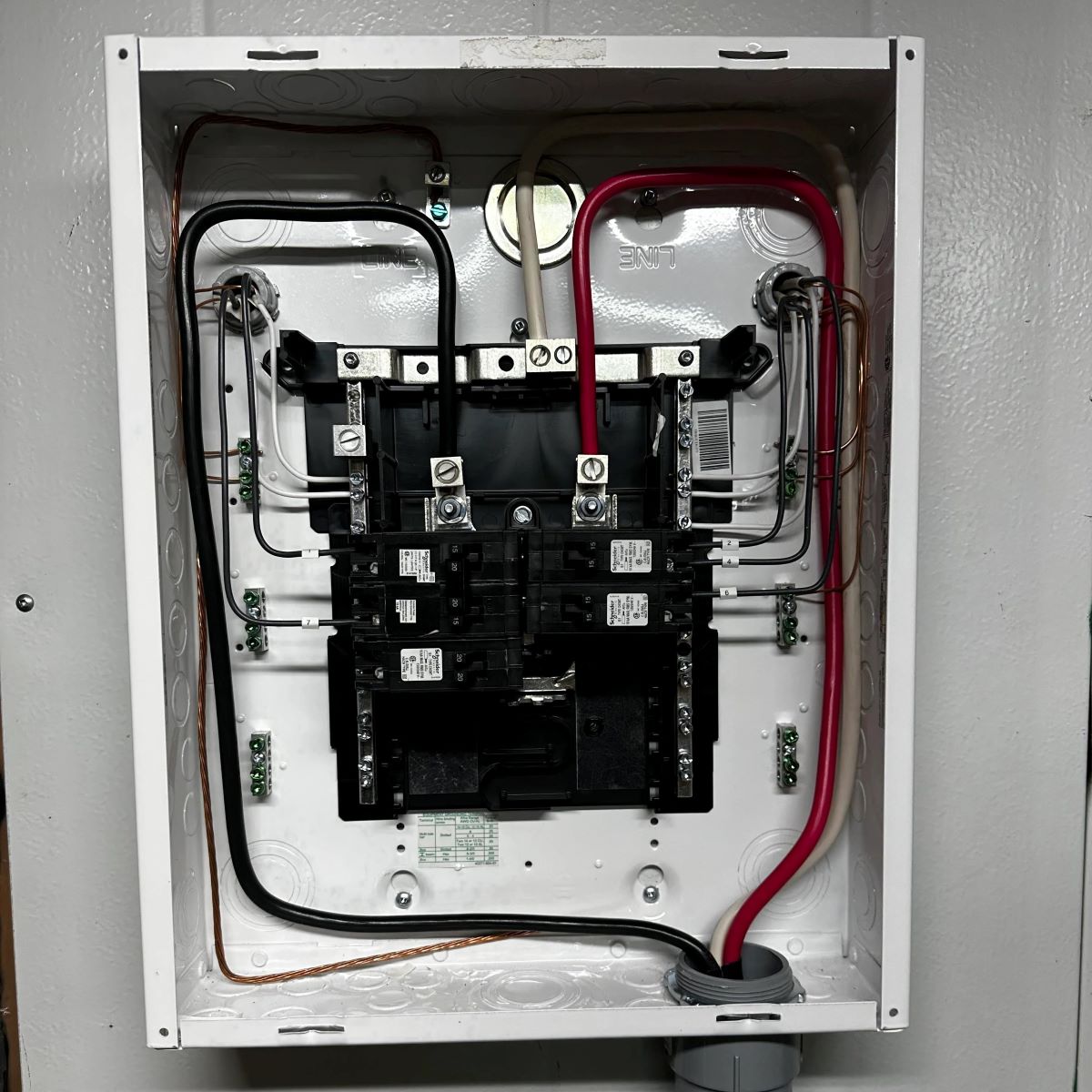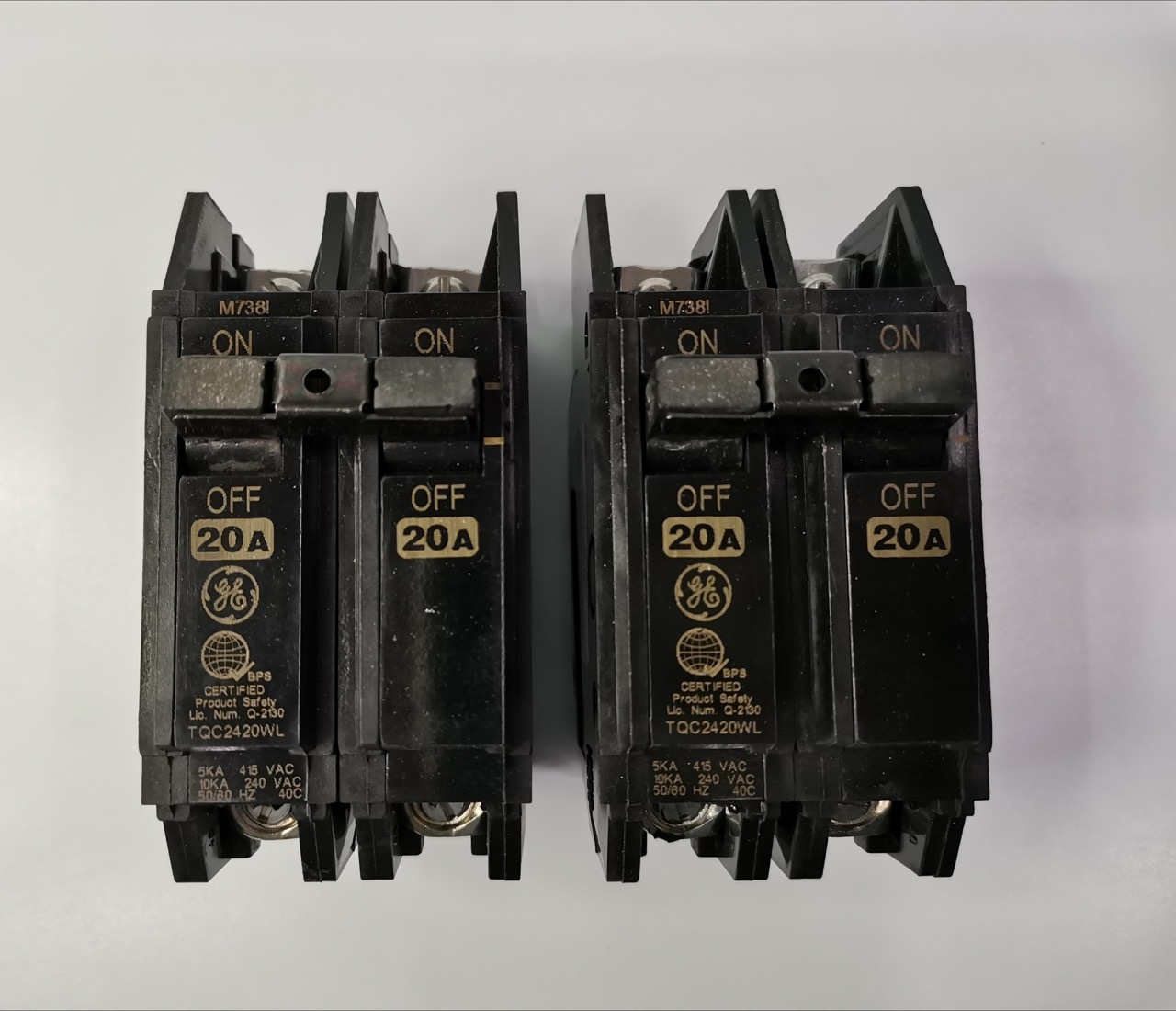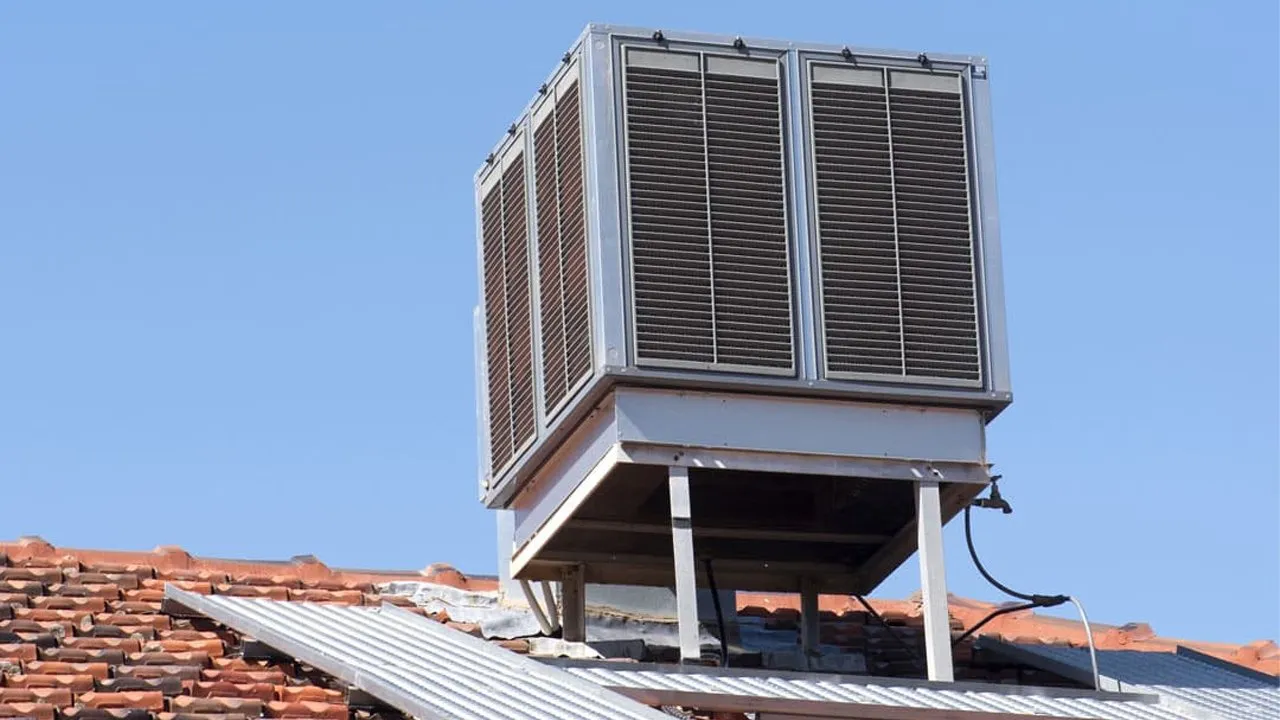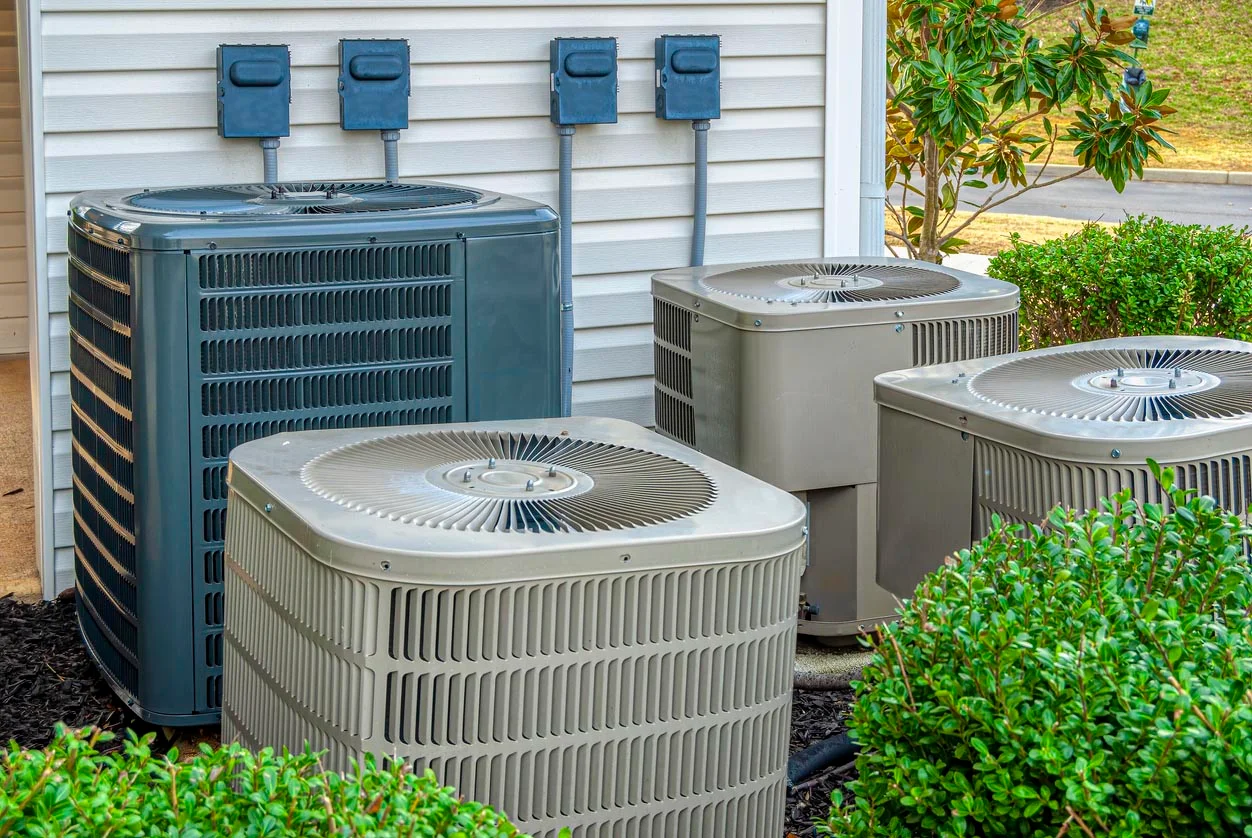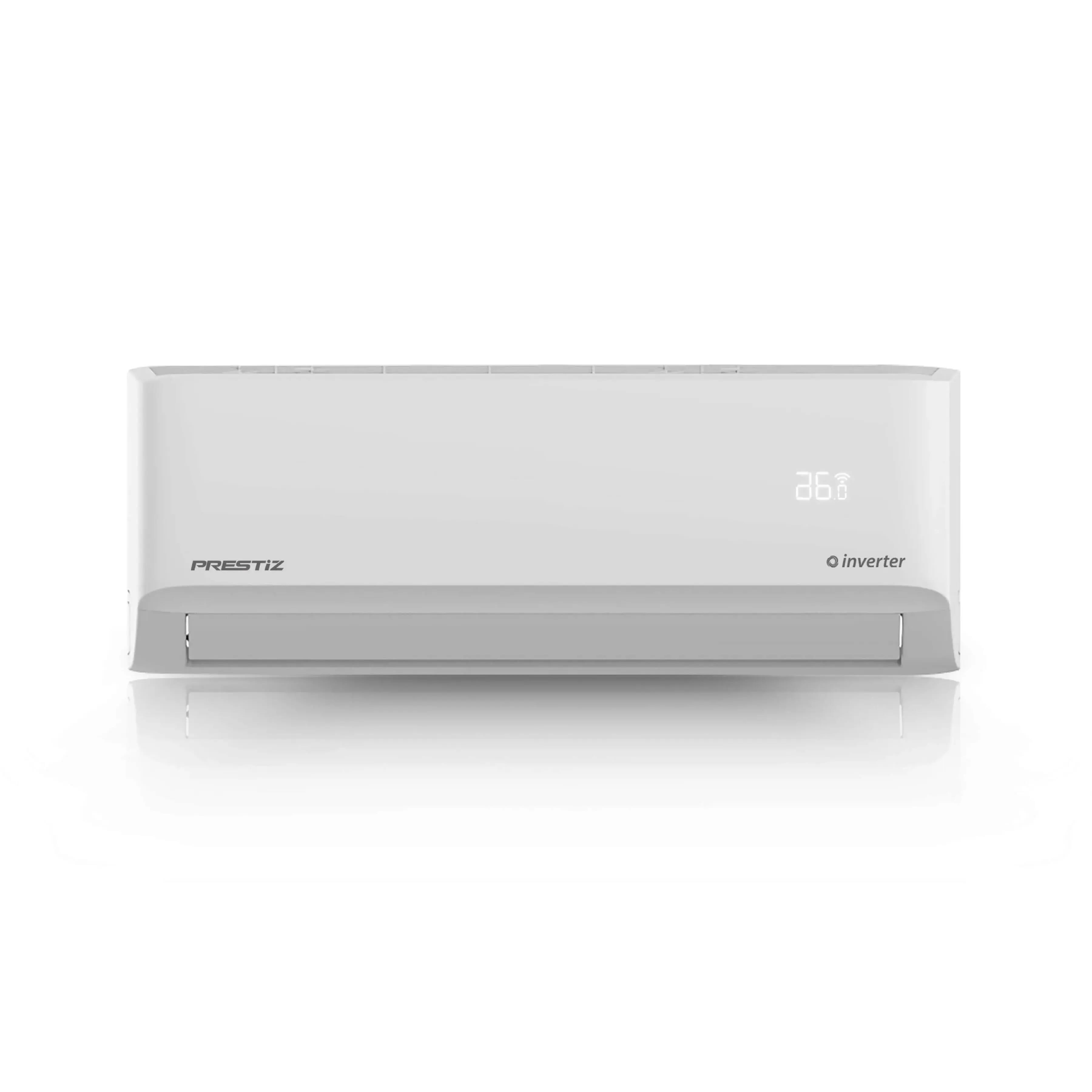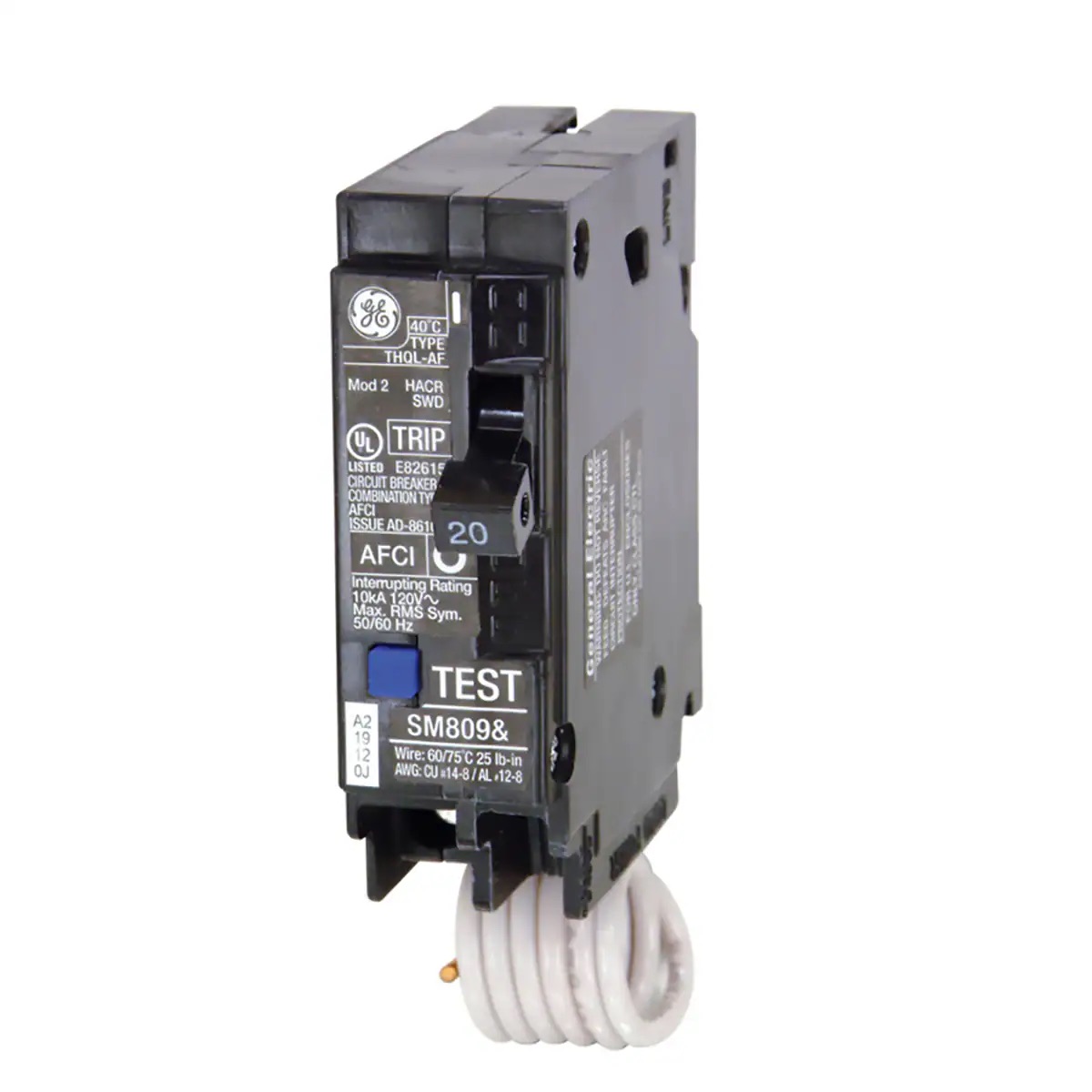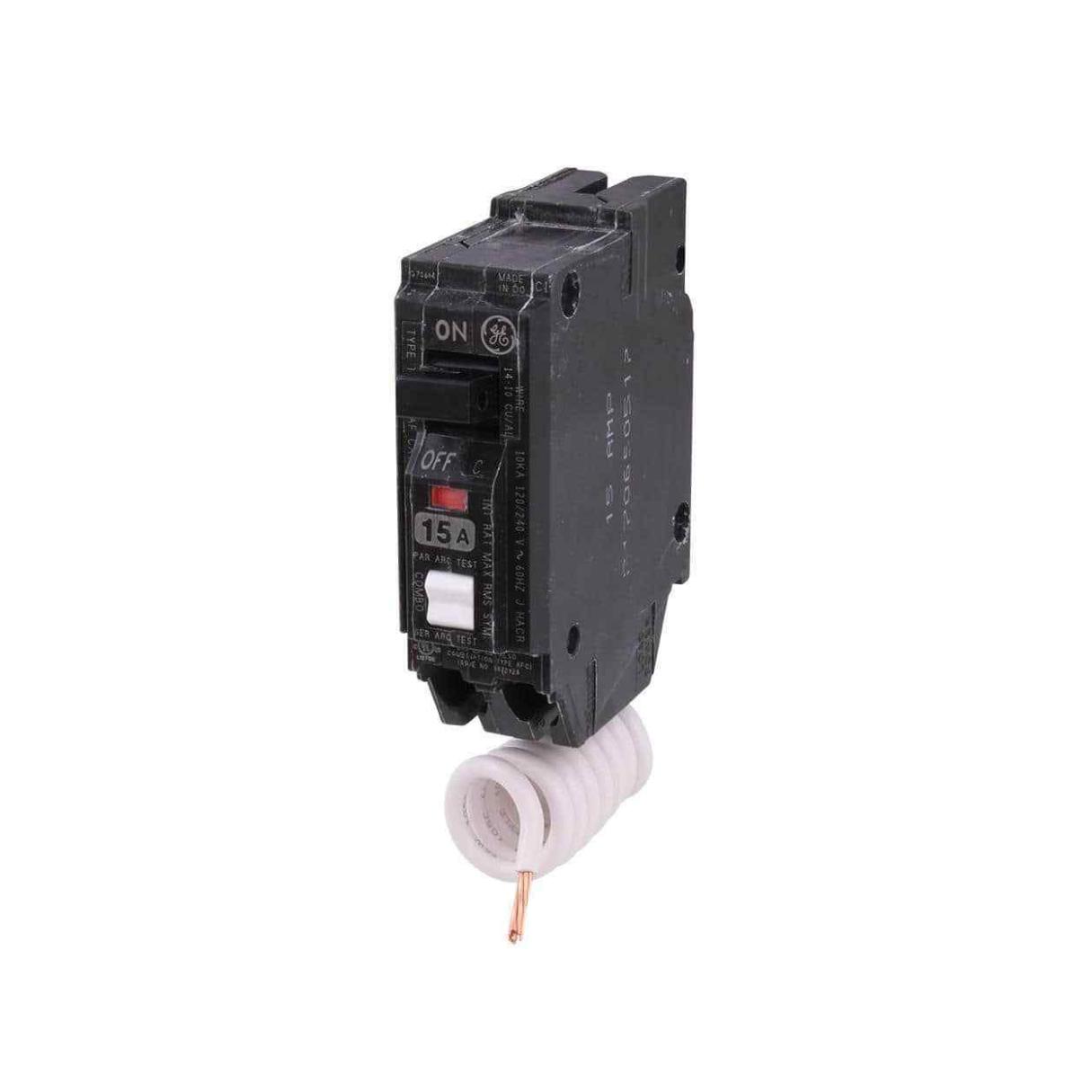Home>Home Maintenance>What Amp Breaker For An Air Conditioner
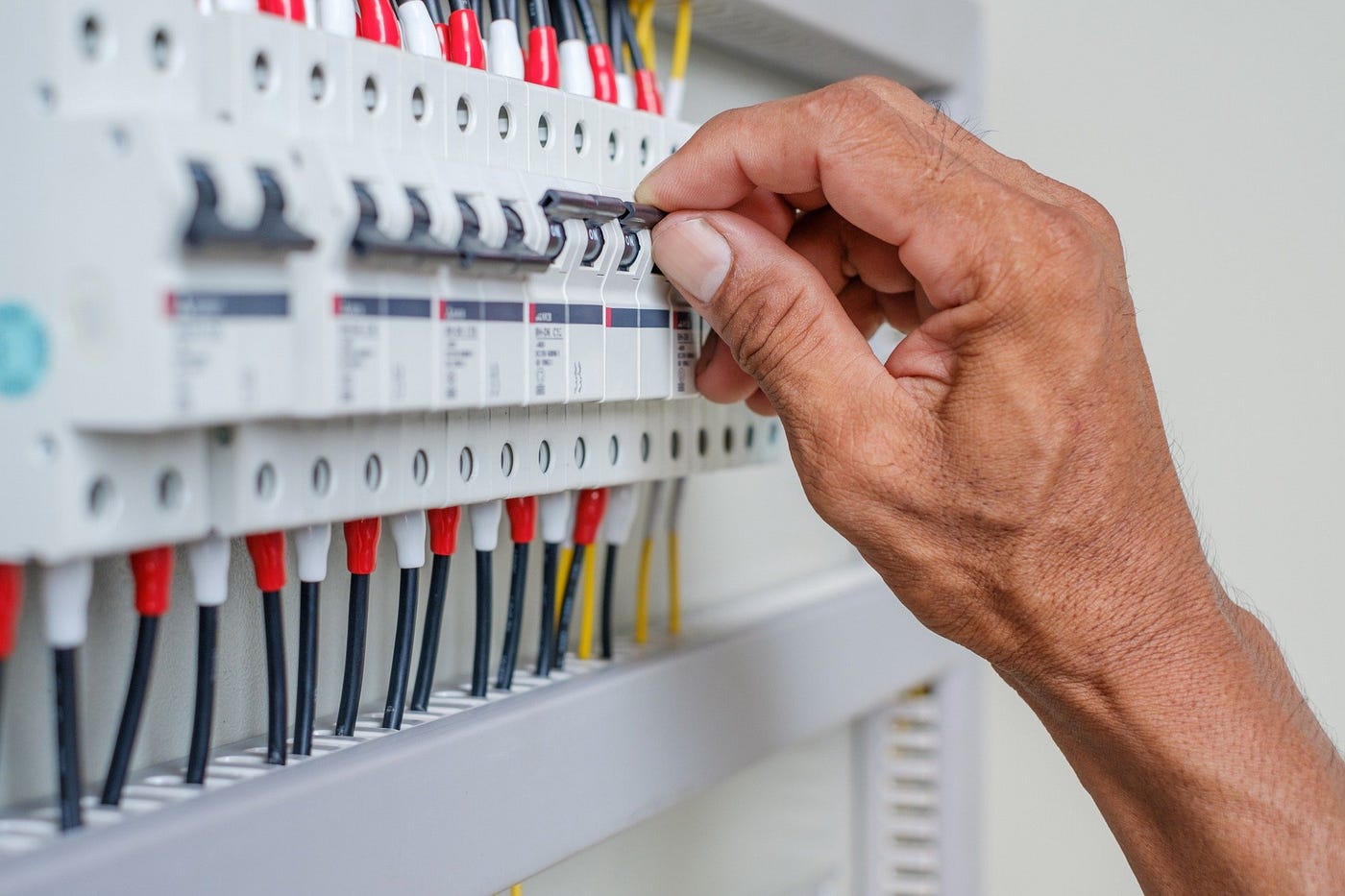

Home Maintenance
What Amp Breaker For An Air Conditioner
Modified: March 7, 2024
Ensure your home's maintenance is on point with the right amp breaker for your air conditioner. Find out what amp breaker you need for optimal cooling.
(Many of the links in this article redirect to a specific reviewed product. Your purchase of these products through affiliate links helps to generate commission for Storables.com, at no extra cost. Learn more)
Introduction
When it comes to home maintenance, one of the most important systems to keep in top condition is your air conditioner. Whether you’re repairing an existing unit or installing a new one, understanding the electrical requirements is crucial. One key component of the electrical system is the amp breaker, which serves as a safety device to prevent electrical overload. Choosing the correct amp breaker for your air conditioner is essential to ensure proper functioning and avoid potential hazards. In this article, we’ll delve into the world of amp breakers and explore how to determine the right breaker size for your air conditioner.
Before diving into the specifics, let’s have a brief overview of amp breakers. An amp breaker, also known as a circuit breaker, is a switch that automatically interrupts the flow of electricity if it exceeds a certain amperage value. It acts as a safeguard to protect both your air conditioner and your home’s electrical system from being damaged by excessive current. When the amp breaker trips, it cuts off the power supply to the air conditioner, preventing overheating and potential electrical fires.
Understanding the amp breaker size required for your air conditioner is crucial for optimal performance and safety. The breaker size is determined by factors such as the electrical load of the air conditioner, the voltage rating, and the current draw. If the amp breaker is too small, it may constantly trip and disrupt the operation of your air conditioner. On the other hand, if the amp breaker is too large, it may not provide adequate protection in the event of a power surge or electrical fault.
Calculating the correct amp breaker size for your air conditioner may seem daunting, but with a step-by-step approach, it can be simplified. By following some guidelines and considerations, you’ll be able to determine the appropriate breaker size for your specific air conditioning system. Additionally, it’s important to consult the manufacturer’s specifications and guidelines, as they will provide specific information about the electrical requirements of your particular air conditioner model.
In the next sections, we’ll dive deeper into the factors to consider when choosing an amp breaker for an air conditioner, the steps to calculate the correct breaker size, and common amp breaker sizes for different air conditioner capacities. We’ll also cover installation and safety considerations to ensure a smooth and secure operation. So, let’s get started!
Key Takeaways:
- Choosing the right amp breaker for your air conditioner is crucial for safety and efficiency. Consider factors like electrical load and voltage rating to ensure proper installation and prevent potential hazards.
- Understanding the electrical requirements of your air conditioner, consulting manufacturer’s specifications, and seeking professional assistance are key to ensuring safe and reliable operation of your cooling system.
Read more: What Are 15 Amp Breakers Used For
Understanding Amp Breakers
Before we delve into determining the right amp breaker size for your air conditioner, let’s take a closer look at how amp breakers work and their role in electrical safety.
An amp breaker, or circuit breaker, is a device designed to protect electrical circuits from overloading. It consists of a switch mechanism that automatically interrupts the electrical flow when it exceeds a certain level, known as the amperage rating. This interruption prevents overheating of wires, potential electrical fires, and damage to appliances or equipment connected to the circuit.
Amp breakers are typically located in the electrical panel of your home. They are usually labeled with their amperage rating, which indicates the maximum amount of electrical current they can handle without tripping. Most residential homes have amp breakers ranging from 15 to 200 amps.
When the electrical load exceeds the capacity of the breaker, it trips, cutting off the power supply to the circuit. This prevents the flow of excessive current and protects the wiring and electrical devices from damage. Once the issue that caused the overload is resolved, the breaker can be reset to restore power.
It’s important to note that amp breakers are not only found in the main electrical panel but are also used for specific circuits throughout the house. For example, air conditioners, refrigerators, and other high-powered appliances may have dedicated circuits with their own amp breakers.
One of the key features of an amp breaker is its trip curve, which relates to the time it takes for the breaker to trip under different levels of overcurrent. The trip curve can be important in areas where sensitive equipment is being used, as it determines how quickly the breaker responds to protect the circuit.
Amp breakers come in different types, including single-pole breakers, double-pole breakers, and ground fault circuit interrupters (GFCIs) for added protection in wet areas, such as bathrooms or kitchens. Each type has its own specific applications and requirements, so it’s essential to choose the right type of breaker for the intended circuit.
Understanding the basics of amp breakers is crucial in determining the correct breaker size for your air conditioner. By having a solid grasp of how they function and their importance in electrical safety, you’ll be better equipped to make informed decisions about the electrical requirements of your air conditioning system.
Determining the Required Breaker Size for an Air Conditioner
When it comes to determining the required breaker size for your air conditioner, several factors need to be considered. These factors include the electrical load of the air conditioner, the voltage rating, and the current draw. Let’s explore these factors in more detail.
The electrical load of an air conditioner refers to the amount of power it requires to operate. This load is measured in watts and can be found in the manufacturer’s specifications for the unit. It takes into account the cooling capacity, motor efficiency, and other electrical components of the air conditioner. It’s important to note that the electrical load can vary depending on the specific model and features of the air conditioner.
Next, consider the voltage rating of your air conditioner. Most residential air conditioners operate on either 120 volts or 240 volts. The voltage rating is crucial because it determines the circuit requirements and the availability of corresponding amp breakers. It’s essential to match the voltage rating of your air conditioner with the appropriate breaker and ensure that your electrical panel can support the voltage.
The current draw, measured in amperes (amps), is the amount of electrical current that the air conditioner draws during operation. This information can also be found in the manufacturer’s specifications. The current draw gives you an idea of the actual power consumption of the air conditioner and helps determine the appropriate breaker size.
To calculate the minimum required breaker size for an air conditioner, you can use Ohm’s Law, which states that voltage equals current multiplied by resistance. In this case, resistance refers to the impedance of the air conditioner’s electrical components.
For example, if your air conditioner operates at 240 volts and has a current draw of 10 amps, you can use Ohm’s Law to determine the resistance: 240 volts divided by 10 amps equals 24 ohms. This means that the air conditioner has an impedance of 24 ohms.
Once you have the impedance, you can determine the minimum breaker size by dividing the impedance by 80%. This is because it’s generally recommended to use a breaker that is 80% of the maximum capacity to ensure proper operation and safety. So, in this example, 24 ohms divided by 0.8 equals 30 amps. Therefore, the minimum required breaker size for the air conditioner would be 30 amps.
Keep in mind that this calculation provides the minimum breaker size. It’s always a good idea to choose a breaker that is slightly higher than the calculated value to allow for any transient power surges or fluctuations.
By considering the electrical load, voltage rating, and current draw of your air conditioner, as well as using Ohm’s Law to calculate the minimum breaker size, you’ll be able to determine the appropriate amp breaker for your air conditioner. This ensures a safe and efficient operation of your air conditioning system while preventing any potential electrical hazards.
Factors to Consider When Choosing an Amp Breaker for an Air Conditioner
Choosing the right amp breaker for your air conditioner involves considering several factors to ensure optimal performance and safety. Let’s explore these factors in detail.
1. Manufacturer’s Recommendations: The first and foremost consideration is to consult the manufacturer’s specifications and guidelines for your air conditioner. The manufacturer’s recommendations will provide valuable information regarding the required amp breaker size, voltage rating, and any specific installation requirements for your particular air conditioner model.
2. Electrical Load: Consider the electrical load of your air conditioner, which is determined by its cooling capacity, motor efficiency, and other electrical components. The electrical load is typically measured in watts and can be found in the manufacturer’s specifications. Ensure that the amp breaker you choose can handle the electrical load of your air conditioner without tripping frequently or causing any power disruptions.
3. Voltage Rating: Check the voltage rating of your air conditioner to ensure that you choose an amp breaker that matches the voltage requirements. Most residential air conditioners operate on either 120 volts or 240 volts. Using an amp breaker with the correct voltage rating is crucial for the safe and efficient operation of your air conditioner.
4. Current Draw: Take into account the current draw of your air conditioner, which is the amount of electrical current it draws during operation. The current draw is typically measured in amperes (amps) and can also be found in the manufacturer’s specifications. Ensure that the amp breaker you choose can handle the current draw of your air conditioner without overloading or overheating.
5. Overcurrent Protection: Consider the level of overcurrent protection provided by the amp breaker. Overcurrent protection is vital as it helps prevent electrical hazards and damage to the air conditioner and electrical system. It’s recommended to choose an amp breaker that offers appropriate overcurrent protection based on the electrical load and current draw of your air conditioner.
6. Breaker Type: Consider the type of amp breaker required for your air conditioner. The most common types are single-pole breakers and double-pole breakers. Single-pole breakers are typically used for 120-volt circuits, while double-pole breakers are used for 240-volt circuits. Ensure that you choose the correct type of amp breaker based on the voltage rating of your air conditioner.
7. Additional Features: Some amp breakers come with additional features, such as ground fault circuit interrupters (GFCIs) or arc fault circuit interrupters (AFCIs), which provide enhanced protection against electrical hazards. Consider these additional features if you want to further enhance the safety of your air conditioner and electrical system.
8. Panel Compatibility: Finally, consider the compatibility of the amp breaker with your electrical panel. Ensure that the amp breaker is compatible with the brand and model of your electrical panel. It’s essential to choose an amp breaker that is approved and listed for use with your specific panel to ensure proper installation and functionality.
By taking these factors into consideration, you’ll be able to choose the right amp breaker for your air conditioner. Remember to consult the manufacturer’s recommendations, analyze the electrical load and current draw, ensure the correct voltage rating, consider overcurrent protection, check breaker type, and ensure compatibility with your electrical panel. By making an informed decision, you’ll ensure the safe and efficient operation of your air conditioning system for years to come.
When determining the amp breaker for an air conditioner, check the manufacturer’s specifications or the unit’s nameplate for the required amperage. It’s important to match the breaker size to the unit’s requirements for safe and efficient operation.
Steps to Calculate the Correct Breaker Size for an Air Conditioner
Calculating the correct breaker size for your air conditioner can be done by following a step-by-step approach. By considering the electrical load, voltage rating, and current draw of your air conditioner, you can ensure that you choose the appropriate amp breaker. Let’s go through the steps to calculate the correct breaker size:
Step 1: Check the manufacturer’s specifications: Start by consulting the manufacturer’s specifications and guidelines for your air conditioner. The manufacturer will provide valuable information regarding the required amp breaker size, voltage rating, and any specific installation requirements for your particular air conditioner model.
Step 2: Determine the electrical load: Identify the electrical load required by your air conditioner. The electrical load is typically measured in watts and takes into account the cooling capacity, motor efficiency, and other electrical components of the air conditioner. You can find this information in the manufacturer’s specifications.
Step 3: Check the voltage rating: Determine the voltage rating of your air conditioner. Most residential air conditioners operate on either 120 volts or 240 volts. Ensure that you choose an amp breaker that matches the voltage rating of your air conditioner.
Step 4: Calculate the current draw: Calculate the current draw of your air conditioner. The current draw is the amount of electrical current drawn by the air conditioner during operation and is typically measured in amperes (amps). You can find this information in the manufacturer’s specifications as well.
Step 5: Use Ohm’s Law: To calculate the minimum required breaker size, you can use Ohm’s Law, which states that voltage equals current multiplied by resistance. First, divide the voltage rating by the current draw to determine the impedance (resistance) of the air conditioner’s electrical components.
Step 6: Apply the 80% rule: It is generally recommended to use a breaker that is 80% of the maximum capacity for safety and optimal performance. Divide the impedance value by 0.8 to calculate the minimum required breaker size. This will ensure that the breaker can handle the air conditioner’s electrical load without tripping frequently or overloading.
Step 7: Choose a suitable breaker size: Based on the calculated minimum required breaker size, choose a breaker that is equal to or slightly higher than the calculated value. This allows for any transient power surges or fluctuations that may occur during operation.
Step 8: Consider other factors: Take into account any specific requirements or recommendations provided by the manufacturer, electrical codes, or licensed electricians. They may have additional recommendations or considerations based on the unique characteristics of your air conditioning system or local regulations.
By following these steps and considering the electrical load, voltage rating, current draw, and other factors, you’ll be able to calculate the correct breaker size for your air conditioner. This ensures the safe and efficient operation of your air conditioning system and helps prevent any potential electrical hazards.
Read more: What Size Electrical Wire For 20 Amp Breaker
Common Amp Breaker Sizes for Different Air Conditioner Capacities
Choosing the right amp breaker size for your air conditioner is crucial for the safe and efficient operation of your cooling system. The specific amp breaker size required for your air conditioner depends on its cooling capacity and other factors. Here are some common amp breaker sizes for different air conditioner capacities:
1. 1-1.5 Ton Air Conditioner: For a 1-1.5 ton air conditioner, which has a cooling capacity of approximately 12,000 to 18,000 British Thermal Units (BTUs), a commonly used amp breaker size is 15 amps. This size is suitable for air conditioners operating at 120 volts.
2. 2-2.5 Ton Air Conditioner: A 2-2.5 ton air conditioner, with a cooling capacity of around 24,000 to 30,000 BTUs, typically requires a 20-amp breaker. This size is suitable for air conditioners operating at 240 volts.
3. 3 Ton Air Conditioner: For a 3 ton air conditioner, which has a cooling capacity of approximately 36,000 BTUs, a commonly used amp breaker size is 30 amps. This size is suitable for air conditioners operating at 240 volts.
4. 4-5 Ton Air Conditioner: A 4-5 ton air conditioner, with a cooling capacity of around 48,000 to 60,000 BTUs, typically requires a 40-amp breaker. This size is suitable for air conditioners operating at 240 volts.
These are general guidelines for common air conditioner capacities, but it’s important to note that different air conditioner models and manufacturers may have specific amp breaker size requirements, which should be referred to in the manufacturer’s specifications.
Additionally, it’s crucial to consult a licensed electrician or adhere to local electrical codes when determining the correct amp breaker size for your air conditioner. They will ensure that the breaker size is in compliance with safety regulations and the specific electrical requirements of your home.
Remember, selecting the appropriate amp breaker size is crucial to prevent overloads and other potential electrical hazards. Choosing a breaker that is too small can cause frequent tripping and disrupt the operation of your air conditioner. Conversely, choosing a breaker that is too large may not provide sufficient protection in the event of a fault or electrical surge.
By understanding the cooling capacity of your air conditioner and consulting the manufacturer’s guidelines, as well as considering the advice of a licensed electrician, you can determine the appropriate amp breaker size for your specific air conditioning system. This will ensure the safe and reliable operation of your air conditioner and provide you with peace of mind during the hot summer months.
Installation and Safety Considerations
When it comes to installing an amp breaker for your air conditioner, there are several important installation and safety considerations to keep in mind. By following these guidelines, you can ensure a smooth installation process and mitigate potential risks. Here are some key considerations:
1. Professional Installation: It’s highly recommended to enlist the services of a licensed electrician for the installation of your amp breaker. They have the expertise and knowledge to safely handle electrical connections and ensure compliance with local electrical codes. Professional installation minimizes the risk of electrical hazards and ensures the longevity and efficiency of your air conditioning system.
2. Electrical Panel Capacity: Before installing an amp breaker, evaluate the capacity of your electrical panel. Ensure that it has sufficient space and the required amperage capacity to accommodate the new breaker. Overloading the electrical panel can lead to overheating, tripping breakers, and potential electrical hazards. If needed, consider upgrading your electrical panel to accommodate the additional load.
3. Proper Wiring: Correct wiring is crucial for the safe and efficient operation of your air conditioner. Ensure that all wiring connections are secure, properly insulated, and in compliance with electrical codes. Improper or loose wiring can cause overheating, arcing, and potential electrical fires. It’s important to follow the manufacturer’s instructions and seek professional assistance when necessary.
4. Grounding: Proper grounding is essential for electrical safety. Ensure that the amp breaker and the air conditioner unit are correctly grounded to prevent electric shocks and protect against electrical faults. Consult a licensed electrician to ensure compliance with grounding requirements and local electrical codes.
5. Clearances and Accessibility: Maintain proper clearances and accessibility around the amp breaker installation area. Ensure that there is sufficient space for easy access to the breaker for future maintenance or troubleshooting. Avoid blocking or obstructing the breaker with any objects or materials.
6. Regular Maintenance: Once the amp breaker is installed, it’s important to regularly inspect and maintain it. Check for any signs of damage or wear, such as loose connections, frayed wires, or corrosion. Keep the surrounding area clean and free from debris, dust, or moisture that can compromise the performance of the breaker. Regular maintenance ensures the longevity of the breaker and helps prevent electrical issues.
7. Power Shutdown: Prior to installing or working on the amp breaker, ensure that the power to the electrical panel and the air conditioning circuit is shut off. This step is critical for personal safety and to prevent electrical shocks or accidents. Always follow proper lock-out/tag-out procedures and use insulated tools when working with electrical systems.
8. Compliance with Regulations: Finally, ensure that the installation of the amp breaker and the overall electrical system complies with local regulations, building codes, and safety standards. Adherence to these regulations helps ensure the safety of your home and protects against any potential legal issues or insurance discrepancies.
By taking these installation and safety considerations into account, you can ensure a secure and reliable installation of the amp breaker for your air conditioner. Prioritizing safety, following electrical codes, and seeking professional assistance when needed will provide you with peace of mind and help maintain a safe and efficient home cooling system.
Conclusion
Choosing the correct amp breaker for your air conditioner is crucial for ensuring the safe and efficient operation of your cooling system. By understanding the electrical load, voltage rating, and current draw of your air conditioner, you can calculate the correct breaker size and mitigate the risk of electrical hazards. The steps involved in determining the required breaker size may seem complex, but by following manufacturer’s recommendations, using Ohm’s Law, and considering other factors, you can make an informed decision.
Factors such as the cooling capacity of your air conditioner and its voltage rating play a significant role in determining the appropriate amp breaker size. It’s important to consult the manufacturer’s specifications for your specific air conditioner model and consider any additional recommendations provided. Additionally, adhering to local electrical codes, consulting a licensed electrician, and following proper installation procedures are essential for the safe installation of the amp breaker.
Installing the correct amp breaker and adhering to safety guidelines ensures not only the reliable operation of your air conditioner but also safeguards against electrical hazards. Proper installation, grounding, wiring, and regular maintenance help prevent overheating, electrical fires, and other potential hazards. Adhering to clearances, accessibility requirements, and compliance with regulations are important aspects to consider for long-term safety and performance.
In conclusion, determining the correct amp breaker size for your air conditioner is a crucial step in maintaining a safe and efficient cooling system. By considering factors such as the electrical load, current draw, voltage rating, and following proper installation procedures, you can make an informed decision that ensures the optimal performance of your air conditioner while prioritizing the safety of your home and everyone in it.
If you have any doubts or lack expertise in handling electrical installations, it is always best to consult a licensed electrician who can provide professional guidance and ensure the proper installation of the amp breaker. By doing so, you can have peace of mind, knowing that your air conditioner is operating safely and efficiently, keeping your home cool and comfortable for years to come.
Frequently Asked Questions about What Amp Breaker For An Air Conditioner
Was this page helpful?
At Storables.com, we guarantee accurate and reliable information. Our content, validated by Expert Board Contributors, is crafted following stringent Editorial Policies. We're committed to providing you with well-researched, expert-backed insights for all your informational needs.
